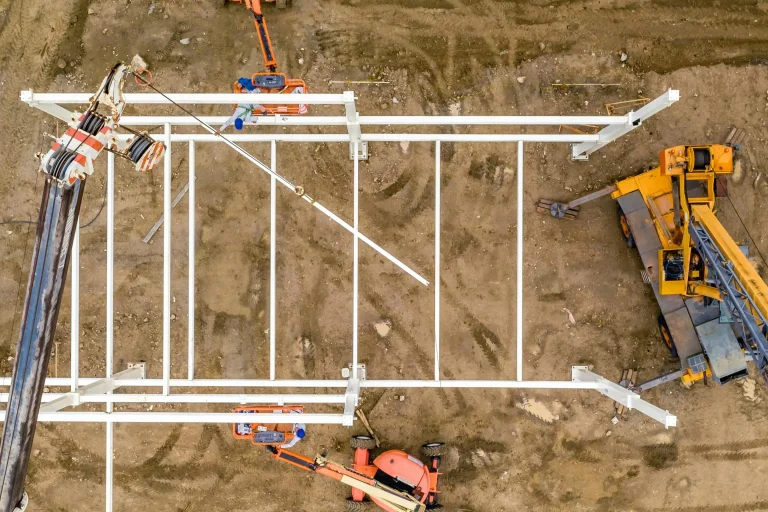Creating Visually Stunning and High-Converting Websites
Bob, an aspiring entrepreneur, had an exciting new idea for an online store. He knew that having a visually stunning and high-converting website was crucial for the success of his venture. As he began planning the design, he realized there was more to creating an effective website than just selecting beautiful images and colors. He needed to take a comprehensive approach, focusing on both aesthetics and functionality to provide an exceptional user experience that would drive conversions.
The Connection Between Design and Conversions
A well-designed website has the power to create a positive user experience, leading to higher conversion rates. Design elements such as color, typography, and visual hierarchy guide users through the site, making it easy for them to find what they’re looking for and take the desired action. Investing in good design not only enhances a website’s aesthetics but also boosts its conversion potential.
Understanding the Target Audience
Knowing your target audience is crucial in designing a high-converting website. Analyze their demographics, preferences, and online behavior to create a site that resonates with them. Catering to your audience’s needs and preferences ensures a seamless user experience, ultimately leading to higher conversion rates.
Visual Hierarchy: Guiding User Attention
Visual hierarchy refers to the arrangement and presentation of design elements to guide user attention. Using contrasting colors, different font sizes, and varying element sizes can create a visual hierarchy that leads users to the most important information or action on a page. An effective visual hierarchy keeps users engaged and encourages them to interact with the website, driving conversions.
Typography and Readability: Impact on Conversions
Typography plays a significant role in website design. Choosing the right fonts and font sizes can greatly impact readability, ensuring users can easily consume the content on your site. Prioritize legibility and readability in your typography choices to create a positive user experience, ultimately influencing conversion rates.
Color Psychology: Influence on User Behavior
Colors can evoke emotions and influence user behavior. Selecting the right color palette for your website can have a direct impact on conversions. Consider the emotions and associations tied to various colors and choose those that align with your brand and desired user actions. Balance color combinations to create a visually appealing website that drives conversions.
Responsive Design: Enhancing User Experience
Responsive design ensures your website adapts to various screen sizes and devices, providing a seamless user experience across all platforms. With an increasing number of users accessing websites on mobile devices, responsive design is critical for user satisfaction and conversion rates. Implement responsive design to cater to all users and maximize conversion potential.
Effective Call-to-Action Elements
Call-to-action (CTA) elements are crucial in driving conversions. Design CTAs that stand out on the page, using contrasting colors and clear, concise language that communicates the desired action. Place CTAs strategically throughout the site, making it easy for users to take action when they are ready. An effective CTA can significantly impact conversion rates.
Loading Speed and Performance Optimization
Website loading speed is a critical factor in user experience and conversions. Slow-loading sites frustrate users, leading to higher bounce rates and lower conversions. Optimize your website’s performance by compressing images, leveraging browser caching, and minimizing HTTP requests. A fast-loading website keeps users engaged and increases the likelihood of conversions.
User Experience (UX) Design: Crafting High-Converting Websites
User experience (UX) design focuses on creating websites that are easy to use and navigate, meeting the needs and expectations of users. A well-designed UX ensures users can find what they’re looking for quickly and intuitively, resulting in a positive experience that drives conversions. Incorporate UX design principles to create a high-converting website that caters to your audience.
Analytics and Conversion Tracking
Monitoring website performance and conversions is essential for continuous improvement. Use analytics tools, such as Google Analytics, to track user behavior, conversion rates, and other essential metrics. Analyzing this data allows you to identify areas of improvement and make informed decisions to optimize your website for conversions. Regularly reviewing and updating your website based on data-driven insights can lead to a more effective and high-converting site.
Testing and Iteration: The Key to Optimization
A high-converting website is a result of continuous testing and iteration. Use A/B testing and multivariate testing to compare different design elements, layouts, and copy to determine what resonates with your audience and drives conversions. Embrace a data-driven approach to website optimization, making incremental changes and testing their impact on conversions. This iterative process ensures your website remains effective in driving conversions over time.
Conclusion
Creating a visually stunning and high-converting website involves a combination of design principles, user experience, and data-driven decision-making. By understanding your target audience, implementing effective design elements, and continuously testing and iterating your website, you can create a site that not only looks great but also drives conversions. Embrace these strategies to develop a website that stands out from the competition and delivers the results you desire.
How do I create a visually appealing website that drives conversions?
To create a visually appealing website that drives conversions, focus on a clean and intuitive layout, utilize visual hierarchy, employ consistent branding, and leverage color psychology. Optimize the user experience by ensuring fast loading speeds, responsiveness, and clear calls-to-action. Continuously test and iterate your design based on data-driven insights.
What is the role of visual hierarchy in website design?
Visual hierarchy helps guide users’ attention by organizing design elements according to their importance. By strategically placing elements and using contrasting colors, sizes, and shapes, you can direct users towards crucial information and desired actions, enhancing the overall user experience and increasing the likelihood of conversions.
How does typography impact user experience and conversions?
Typography plays a vital role in conveying your brand’s personality, improving readability, and enhancing user experience. Choosing the right fonts, sizes, and spacing can make content more accessible and engaging, increasing the chances of users taking desired actions and ultimately improving conversion rates.
What are some best practices for using color psychology in website design?
Color psychology can influence users’ emotions and perceptions of your brand. Use contrasting colors to emphasize crucial elements like calls-to-action, and choose colors that evoke the desired emotions and align with your brand identity. Test different color schemes to find the one that resonates best with your target audience and drives conversions.
How important is responsive design in creating high-converting websites?
Responsive design is crucial for high-converting websites, as it ensures that your site looks and functions well on various devices and screen sizes. With a growing number of users accessing websites on mobile devices, a responsive design can significantly improve user experience, reduce bounce rates, and increase the likelihood of conversions.
What are some tips for designing effective call-to-action elements?
For effective call-to-action (CTA) elements, use contrasting colors to make them stand out, create a sense of urgency with action-oriented language, and position CTAs strategically on your website to increase visibility. Test various designs, copy, and placements to find the most effective CTAs for driving conversions.
How can I optimize my website’s loading speed and performance for better conversions?
Optimize your website’s loading speed by compressing images, using browser caching, minimizing HTTP requests, and utilizing a content delivery network (CDN). Regularly monitor your website’s performance and make necessary improvements to ensure fast load times, as slow-loading websites can frustrate users and lead to decreased conversions.
What is the importance of user experience design in creating a high-converting website?
User experience (UX) design is essential for high-converting websites, as it focuses on creating seamless and enjoyable interactions for users. A well-designed UX can improve user satisfaction, increase engagement, and encourage desired actions, ultimately leading to higher conversion rates.
How can I track my website’s performance and conversion rates?
To track your website’s performance and conversion rates, use analytics tools like Google Analytics to monitor metrics such as page views, bounce rates, average session duration, and conversion rates. Set up goals and events to track specific actions, and use these insights to identify areas for improvement and optimize your website for better conversions.







